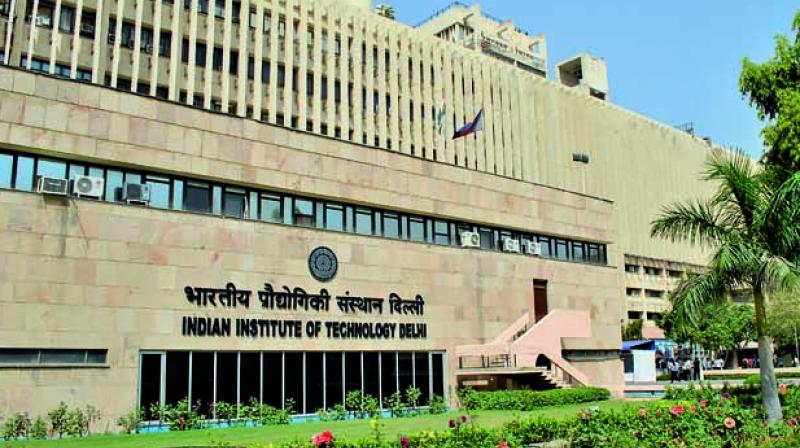
What if your path to becoming a doctor didn’t only follow the traditional route of wards, patients, and textbooks — but also included algorithms, AI, and imaging? What if your training was shaped not just by medical science, but by technology — so you graduate ready to lead health-care innovation?
This vision is becoming real. IIT Kharagpur is preparing to launch its first MD (Doctor of Medicine) program — designed to merge medical education with technological advance. This could be a turning point in how India trains its doctors.
Let me walk you through what lies ahead, why this is exciting, what challenges must be faced, and what this could mean for you — a hopeful MD aspirant.
What’s Happening at IIT Kharagpur
IIT Kharagpur has recently secured approval from the National Medical Commission (NMC) to start its first postgraduate MD course.
The plan is to begin with around 20 seats in the first batch.
Clinical (hospital) training will be done at SPMSH — a medical facility next to the IIT campus. The hospital is being upgraded: new wards, operation theatres, better infrastructure.
Lecture-based theory and academics might be held partly in Dr B C Roy Medical College, or within IIT’s own classrooms and infrastructure.
Earlier, IIT Kharagpur had considered launching an MBBS (undergraduate medical) course, but that idea is currently on hold. The initial focus is on postgraduate MD level.
IIT Kharagpur already has something called SMST (School of Medical Science & Technology). Under this, it offers MMST (Master in Medical Science & Technology) for MBBS graduates, blending medicine and technology.
So in short: IIT Kharagpur is stepping into medical education at a higher level, combining its strengths in technology with core medical training.
Why This New “Tech-First MD” Could Be Special
This isn’t just putting a doctor’s degree in a tech institute. It’s about rethinking what a doctor’s education can be, in an age when health care and technology are intertwining more than ever.
1. Doctors Who Speak Two Languages: Medicine and Tech
In current medical training, many doctors become excellent in diagnosis, treatment, and patient care — but their understanding of the technology behind diagnostic devices, AI systems, data tools is often limited. A tech-first MD can fill that gap.
You’d learn not just how to use devices, but how they work, how to interpret digital data, how to apply AI or machine learning for patient monitoring or disease prediction, and how to co-create new medical tools.
2. Richer Research Opportunities
IITs are centerpieces of research and innovation. An MD student here could partner with engineers, data scientists, and biotechnologists in the same campus.
You could work on projects like wearable health devices, smart diagnostics, image analytics, bio-sensors, or disease prediction models. You could publish in journals that sit between medicine and technology. You might even spin off a health-tech startup while still in college.
3. Better Labs, Tools, and Mentorship
Because of IIT’s funding, collaborations, and infrastructure, students may have access to:
Advanced imaging labs
Bioengineering and device labs
AI, data, and computational tools
Mentors from both medical and engineering fields
Industry tie-ups that help convert research to real-world solutions
This kind of environment is rarer in traditional medical colleges, especially in resource-constrained settings.
4. Changing How We View Medical Education
Historically, medicine was taught mostly as biology, pathology, anatomy. But health care today is also about data, sensors, algorithms, imaging — things that come from engineering, computation, data science.
This MD would push forward a new mindset: doctors are not just healers, but also innovators, technologists, and collaborators in health systems.
What Challenges Lie Ahead
No bold idea is without its difficulties. Here’s what IIT Kharagpur and its team will need to overcome for this MD to fully succeed.
A. Getting the Rules to Fit
Medical education is governed by strict rules, standards, and accreditation. Every classroom, hospital bed, faculty member, curriculum module must meet those. Because this is a new hybrid model (medicine + tech), regulations may not yet accommodate many of the innovations. Aligning everything with existing norms, or changing norms, will be a hurdle.
B. Keeping Clinical Strength While Adding Tech
Medicine demands deep clinical exposure — diagnosing patients, doing rounds, handling emergencies, understanding human complexity. If too much time is spent on technology, there’s a risk that clinical training becomes weak. The program must ensure doctors still gain strong hands-on clinical skills.
C. Finding Teachers Who Understand Both Worlds
It’s hard to find faculty who are strong in medicine and also fluent in engineering, AI, device design. IIT will likely need to create teams combining medical faculty, engineers, computer scientists — people who can teach across disciplines.
D. Cost, Maintenance, and Scaling
High-end imaging systems, sensors, computational servers, lab infrastructure — all cost money. Maintaining them, updating, scaling from 20 to 100+ seats, ensuring consistent quality — all will demand large, continued investment.
E. Winning Trust and Recognition
Some traditional medical schools, doctors, or hospitals may be skeptical: “Will these MDs be accepted as equal?” “Is their clinical skill as strong?” It will take time for this new model to gain full acceptance in hospitals, regulatory bodies, and among students/faculty.
F. Making It Accessible
Such an advanced course could become expensive or elite. The question is: will students from small towns, underprivileged backgrounds, economically challenged areas get access? There must be strong scholarship, outreach, and inclusive policies so that talented students everywhere can compete.
Who This is For — And Who It’s Not
This program is likely to suit students who:
Love both medicine and technology
Are curious, open to new tools, and willing to learn across disciplines
Want not just to treat patients, but also to build solutions, research, innovate
Can handle complexity, changing learning curves, cross-domain thinking
However, if you prefer purely clinical work, or want a course with minimal distractions from research and technology, a traditional MD path might still feel more comfortable.
How to Prepare, Step by Step
If your dreams are aligning with this vision, here’s how to ready yourself:
During MBBS / Undergraduate Years
Strengthen your basics: anatomy, physiology, pathology — your medical foundation must be rock-solid.
Learn programming (Python, R) and statistics — even small exposure helps.
Participate in projects or mini-research involving devices, imaging, data, or health tech.
Collaborate with engineering or CS students to build prototypes or health apps.
Attend workshops, hackathons in med-tech, AI in health, sensors, etc.
Before Applying
Keep track of official announcements from IIT Kharagpur, NMC, medical authorities.
Prepare a strong application / personal statement: show your interest in both medicine and technology, past work, vision.
Develop a small portfolio (mini project, paper, app) linking health and tech.
Be ready for both medical and technology aptitude tests or interviews. Plan finances, scholarships, mentors, guides.
How SuGanta Can Help You Get There
Now, let’s talk about how SuGanta — the online tutor-matching and personalized learning platform — can make your preparation journey smoother and more effective.
1. Personalized Learning Support
SuGanta connects you with experienced tutors in subjects like Biology, Chemistry, Physics, and Computer Science — the exact mix you need if you’re aiming for a tech-integrated MD.
Whether you’re brushing up on human anatomy or trying to understand AI basics, SuGanta provides custom study plans and one-on-one sessions that fit your goals.
2. Learn the Smart Way
Preparing for medical exams while keeping up with technology can feel tough. With SuGanta’s smart tools, you can:
Schedule your weekly lessons and tests
Track progress through regular reports
Rewatch recorded sessions anytime you need a quick revision
It’s like having your own personal classroom — available 24/7.
3. Guidance from Experts and Mentors
SuGanta doesn’t just focus on marks — it focuses on understanding and growth. Tutors help students think critically, solve problems, and apply knowledge in practical ways — skills that are essential for research-oriented programs like the IIT MD.
What the Future Could Look Like
If this MD becomes a success, here’s what might happen:
A new generation of doctors who are also innovators, technologists, problem-solvers
Faster translation of research from lab to clinic (new devices, diagnostics, AI tools)
Health care more adapted to modern tools: telemedicine, predictive diagnostics, wearable monitoring
Other medical colleges chasing similar hybrid models
Stronger “med-tech ecosystem” in India, with startups, collaborations, innovation
In a few years, “doctor” might not mean just treating patients — it could also mean designing the tools that treat patients.
Final Thoughts
The plan to offer a tech-first MD at IIT Kharagpur is bold, ambitious, and full of promise. It holds the potential to reshape medical education, doctor training, and health outcomes in India.
If your heart beats for both medicine and technology, then this could be your path. Be ready, prepare smartly, aim for deep learning, and believe that you can be part of the change.





